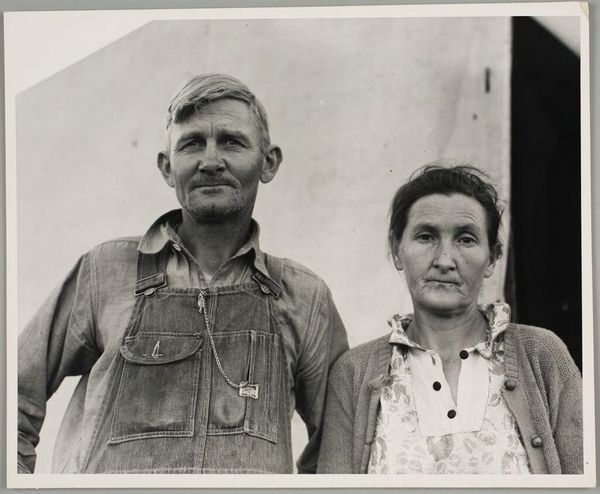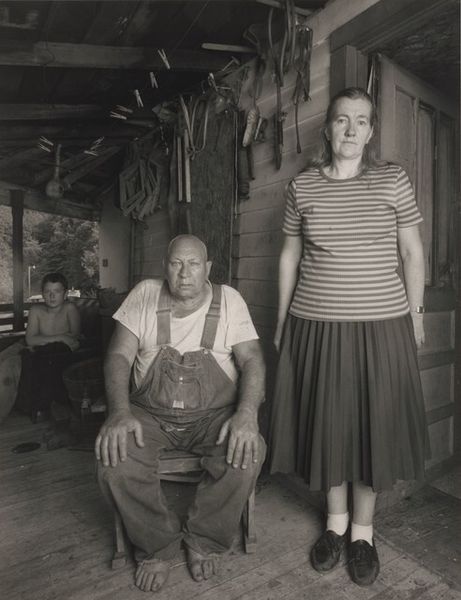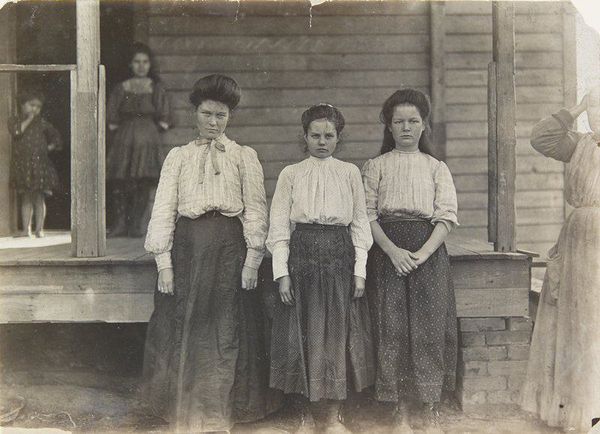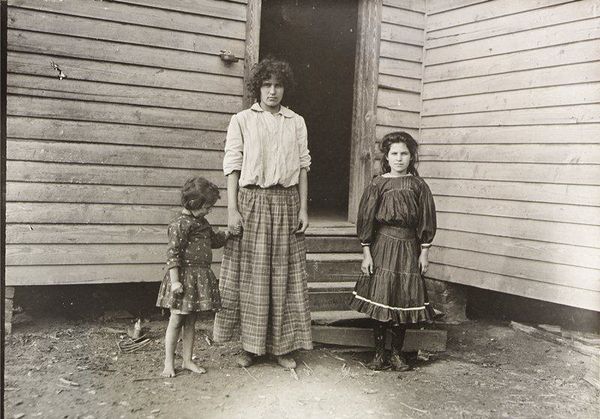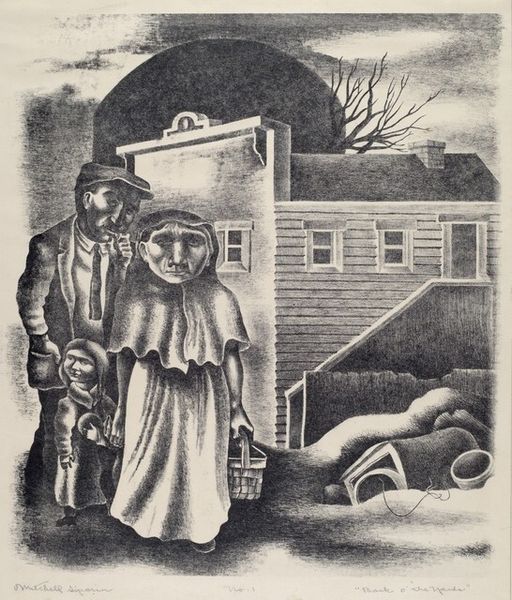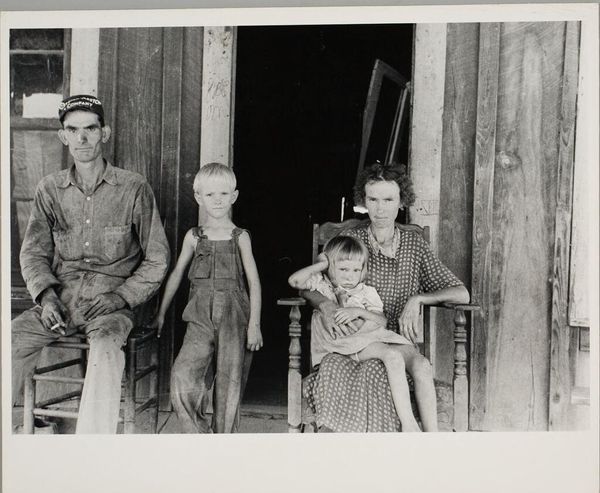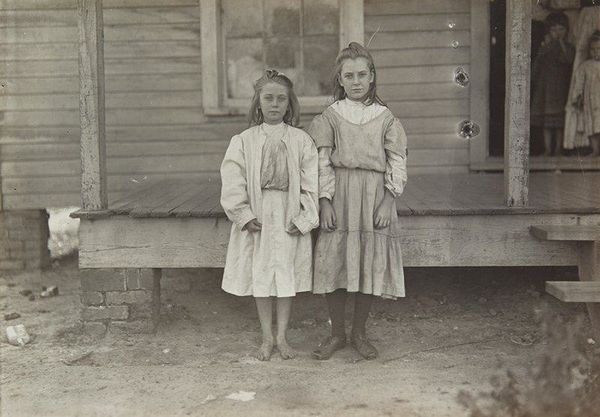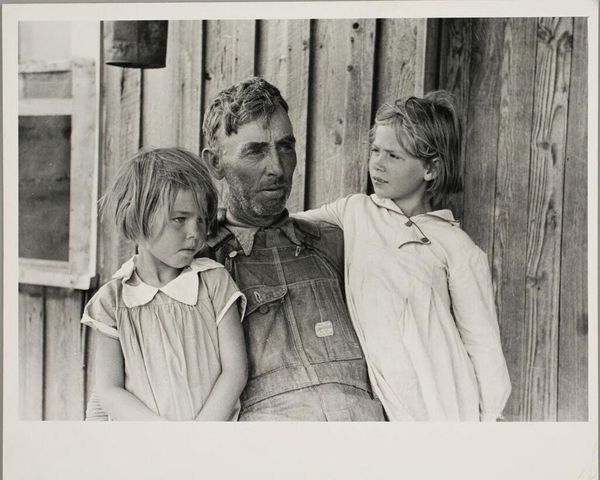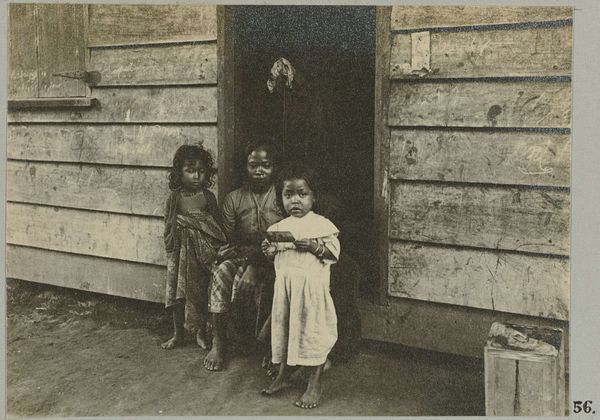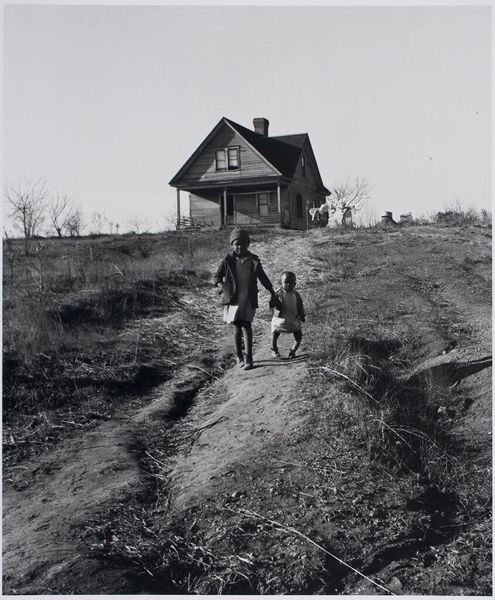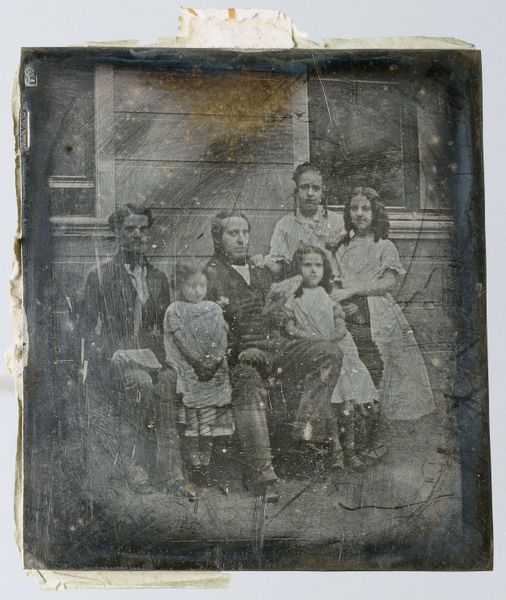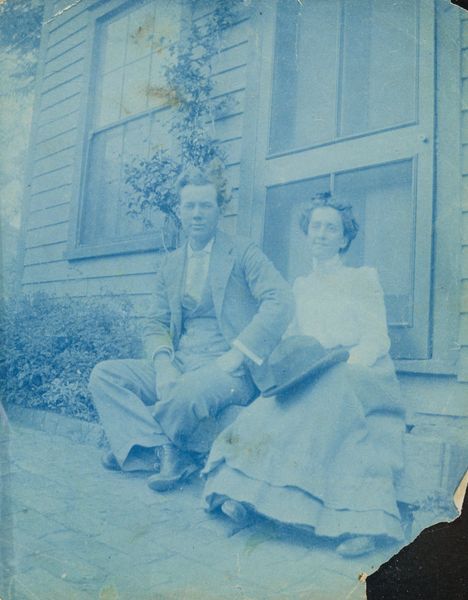
drawing, print, graphite
#
portrait
#
drawing
# print
#
social-realism
#
pencil drawing
#
ashcan-school
#
graphite
#
portrait drawing
#
history-painting
#
realism
Dimensions: image: 23.18 × 31.75 cm (9 1/8 × 12 1/2 in.) sheet: 29.21 × 40.01 cm (11 1/2 × 15 3/4 in.)
Copyright: National Gallery of Art: CC0 1.0
Curator: Let's talk about Bernarda Bryson's "Arkansas Sharecroppers," created between 1935 and 1936. It's a graphite drawing, rendered as a print. Editor: First impression? Bleak. Absolutely, soul-crushingly bleak. The whole composition seems to sag, burdened by… well, life, I suppose. Curator: Bryson, affiliated with the Ashcan School, clearly positions this within a social realism context. Her focus is on portraying the hardships endured during the Depression. Editor: Hardships isn’t the half of it. Look at their faces. Defeated, yet something resilient flickers in their eyes, you know? And those cotton plants look sinister somehow, not the romantic vision we're fed in history books. Curator: Indeed. Notice the use of graphite—the deliberate mark-making. The artist’s hand is very present. She chose printmaking techniques to reach a wider audience, reflecting a desire to raise social awareness about the economic conditions. The number "666" emblazoned on a sign referring to malaria outbreaks… it’s potent symbolism. Editor: Totally agree, the medium conveys a lot of meaning. That sign, though. “Malaria, chills, fever.” Like an omen hanging over them, a curse attached to the very land. There is something surreal about its repetitive appearance. It’s the land they depend on also betraying them, literally sickening them. And beyond this idea, her way to represent these folks and their living spaces using pencil drawings adds intimacy, almost forcing us to confront them. Curator: The work serves as a historical document of the era. Consider the material conditions: sharecropping, exploitation, disease, lack of resources. All deeply embedded in the means of production and how that affected these people. Editor: Absolutely, it’s a testament to resilience but a brutal indictment of a system designed to keep them down. Her use of graphite creates an image that can simultaneously communicate tenderness and raw misery. It is also the ability to look directly at something painful. I mean, how do you create such intense emotion with graphite and paper? Curator: Bryson's background and involvement with the WPA further contextualizes her work, which sought to validate the labor and experiences of everyday Americans. Editor: Right. Thinking about it, her perspective… it's a challenge to historical narratives. Powerful. This seemingly simple drawing carries an emotional weight that makes it unforgettable.
Comments
No comments
Be the first to comment and join the conversation on the ultimate creative platform.
